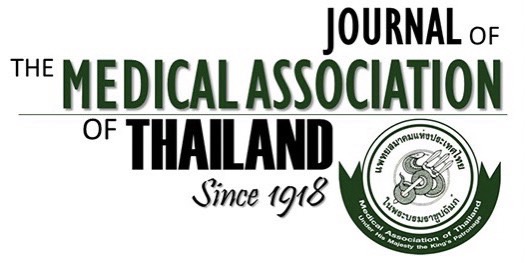The Thai Anesthesia Incident Monitoring Study (Thai AIMS) of Anesthetic Equipment Failure/Malfunction: An Analysis of 1996 Incident Reports
Chaiyapruk Kusumaphanyo MD*, Somrat Charuluxananan MD**, Dujduen Sriramatr MD*, Aksorn Pulnitiporn MD***, Wimonrat Sriraj MD****
Affiliation : * Department of Anesthesiology, Faculty of Medicine, Srinakharinwirot University, Bangkok, Thailand ** Department of Anesthesiology, Faculty of Medicine, Chulalongkorn University and Chulalongkorn Research Center for Quality, Safety and Innovation in Patient Care, Bangkok, Thailand *** Department of Anesthesiology, Khon Kaen Regional Hospital, Khon Kaen, Thailand **** Department of Anesthesiology, Faculty of Medicine, Khon Kaen University, Khon Kaen, Thailand
Background : The present study is a part of the multi-centered study of model of anesthesia relating adverse
events in Thailand by incident report (The Thai Anesthesia Incident Monitoring Study or Thai AIMS). The
objective was to identify the frequency distribution, contributing factors, and factors minimizing incident of
equipment failure/malfunction.
Material and Method: As a prospective descriptive research design, anesthesia providers reported the data
as soon as the incidents of equipment failure/malfunction occurred. Standardized forms of incident report
were then mailed to the center at Chulalongkorn University and three anesthesiologists reviewed the data.
Results : Ninety-two cases of equipment failure/malfunction were reported from 51 hospitals across Thailand.
Between January and June 2007, 92 incidents of equipment failure/malfunction were reported out of 1996
anesthesia-related incidents (4.6%). Failed/malfunctioned equipment included anesthetic circuit (17.4%),
anesthesia machine (15.2%), capnography (15.2%), laryngoscope (15.2%), ventilator (12%), pulse oximeter
(8.7%), vaporizer (4.3%), endotracheal tube (3.3%), sodalime (3.3%), and electrocardiogram (2.2%). All 16
anesthetic circuit incidents (100%) were detected by clinical signs whereas five incidents (31.3%) were
detected firstly by monitors. All 14 laryngoscope malfunction (100%) were detected solely by clinical signs.
Only one out of eight (12.5%) of pulse oximeter incidents was detected by clinical signs before the pulse
oximeter itself. Three out of four (75%) incidents of vaporizer were detected by clinical signs before monitors.
The majority of equipment malfunction was considered as related to anesthetic (69.6%) and system factors
(69.6%) and 71.7% of incidents were preventable. Seventy-four incidents (80.4%) were caused by human
error and, specifically, rule-based error in three fourths.
Conclusion : Contributing factors were ineffective equipment, haste, lack of experience, ineffective monitors,
and inadequate equipment. Factors minimizing incidents were equipment maintenance, pre-use equipment
checking, vigilance, prior experience, and compliance to guidelines. Suggested strategies were quality
assurance activity, training, and improvement of supervision.
Keywords : Anesthesia, Incidence, Incident report, Complication, Equipment failure, Human error, System error, Monitoring



